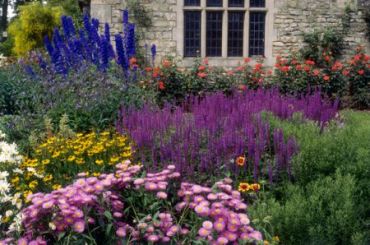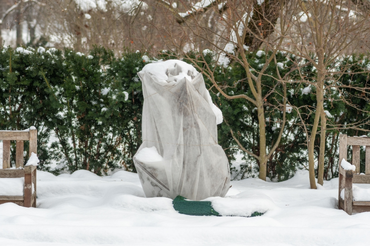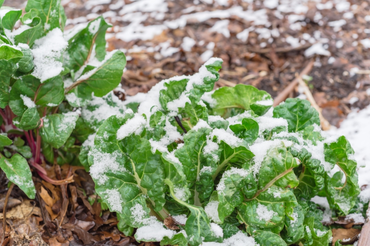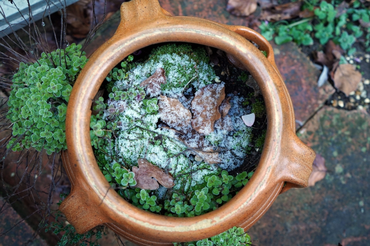
What You Need to Know About Planting Perennials in the Garden
Many thrifty homeowners and gardeners prefer perennials to annuals because they provide better value for money. While annuals need to be planted each year, only to die at the end of the season, perennial bedding plants can be planted once and will return year after year for you to enjoy. If you have a garden design that you love and have no desire to change things up on a yearly basis, perennial plants could be the ideal choice for you. Many will return each year bigger and even better, creating multi-layered tapestries of texture and colour for your garden. Here’s everything that you need to know about how to choose, plant, and maintain perennial bedding plants in your garden.
Choosing Perennials
It is important to make sure that you choose the right plants for the right place when deciding which perennials you would like in your garden. Spend some time checking out the garden sites, look at the soil type, and consider how much it retains moisture. It is also important to think about the amount of sun or shade that the area will get in order to help you choose the most suitable perennials for the area since some thrive in direct sunlight while others prefer to be kept away from the sun. Consider the overall climate in your garden and the type of weather that your area gets to help you narrow down the type of perennials that are likely to grow best here. Bear in mind that most plants only flower for 3-4 weeks and different plants flower at different times of year. You don’t want everything flowering at once for 3-4 weeks only to be left with nothing for the remainder of the season.
Planting Perennials – When to Plant
Hardy perennials are best planted during the autumn when the soil is still warm from the summer and there is enough time for the plants to establish a strong root system in time for flowering during the spring. If you want to plant perennials earlier this year, Spring is the next best time to get planting, however, you will need to make sure that they are adequately watered during the summer when the weather is likely to be dry. If you want to plant perennials during the spring, the best options to choose are plants that are not reliably hardy since this will give them plenty of time to establish their roots before the winter. While it’s possible to plant perennials during the summer, this will often take a more maintenance and you will need to ensure that the plants are regularly watered throughout the growing season to make up for the lack of moisture in the soil during the dry weather.
How to Plant
Once you have chosen the perennials that you want to plant and have decided when to plant them, it’s time to get started. Bear in mind that some perennials are going to be in your garden for years to come unless you remove them, so it’s important to make sure that the soil is thoroughly prepared. Use some soil conditioner or well-rotted organic matter to improve the condition of the soil and make sure that any weeds or large stones are cleared away from the area. If you have perennial weeds in your garden, spray them with weedkiller before removing them completely by the roots to prevent them from growing back in the area. Try to plant in clusters of 3-5 plants so you get a bigger display of colour when they flower. If you plant lots of different types of plant in ones and twos they can get lost in a big border. Also, don’t forget to consider the height of the plant when its mature as you don’t want tall plants obscuring small ones behind.
Once your ground is ready for planting, dig a hole in the soil slightly larger than the pot or the plant, if any roots have wrapped around the root ball, carefully unwind them. Then, place the perennial in the ground keeping the top of the root ball at the same level as the soil. Once you’ve placed the plant, fill the surrounding hole with fresh compost and pack it down firmly with your fists to remove any air pockets. Finally, water your plant thoroughly, and you are done!
Ongoing Perennial Maintenance
There are several things that you should do on an ongoing basis to make sure that your perennials are well-cared-for and maintained, and that they grow reliably each year looking fantastic. During the early spring, use a general slow-release fertiliser to feed the perennials and use well-rotted organic matter to mulch the bare soil in between the plants. Any tall-growing perennials should be well-supported using canes and string or grow-through plant supports designed for this purpose. You should make sure that the surrounding ground is clear from weeds throughout the spring and summer, and regularly remove any faded or dead flowers from the plant during the flowering season to keep the plant putting out new buds. During the autumn, many perennials will begin to lose their leaves for the season, so be sure to cut them back to prevent the leaves from rotting and going soggy. From time to time, it is a good idea to tidy up evergreen perennials to remove any dead or damaged leaves or faded flower stems.
How to Buy Perennials
You can find a huge range of perennials available to purchase at a range of garden centres and nurseries, including our range at Carpenters Nursery. We grow 5000 of our these ourselves and buy in a good selection of late flowering plants during the summer too. We usually have multi-buy deals available when you buy 4 or more which will help keep the cost down if you are planting a large number of plants. In terms of choice and availability April and May are the best time to buy.
If you are looking for some ideal plants to pair with the perennials in your garden, you can choose from our extensive range of olive trees, bay trees, camellias, rhododendrons, pittosporum, euonymus, Ilex box cones and balls, and Japanese Maples that will look stunning paired with perennials in any garden.
Perennials are the best choice if you want plants for your garden that reappear every year. Which stunning perennial bedding plants will you add to your garden first?




